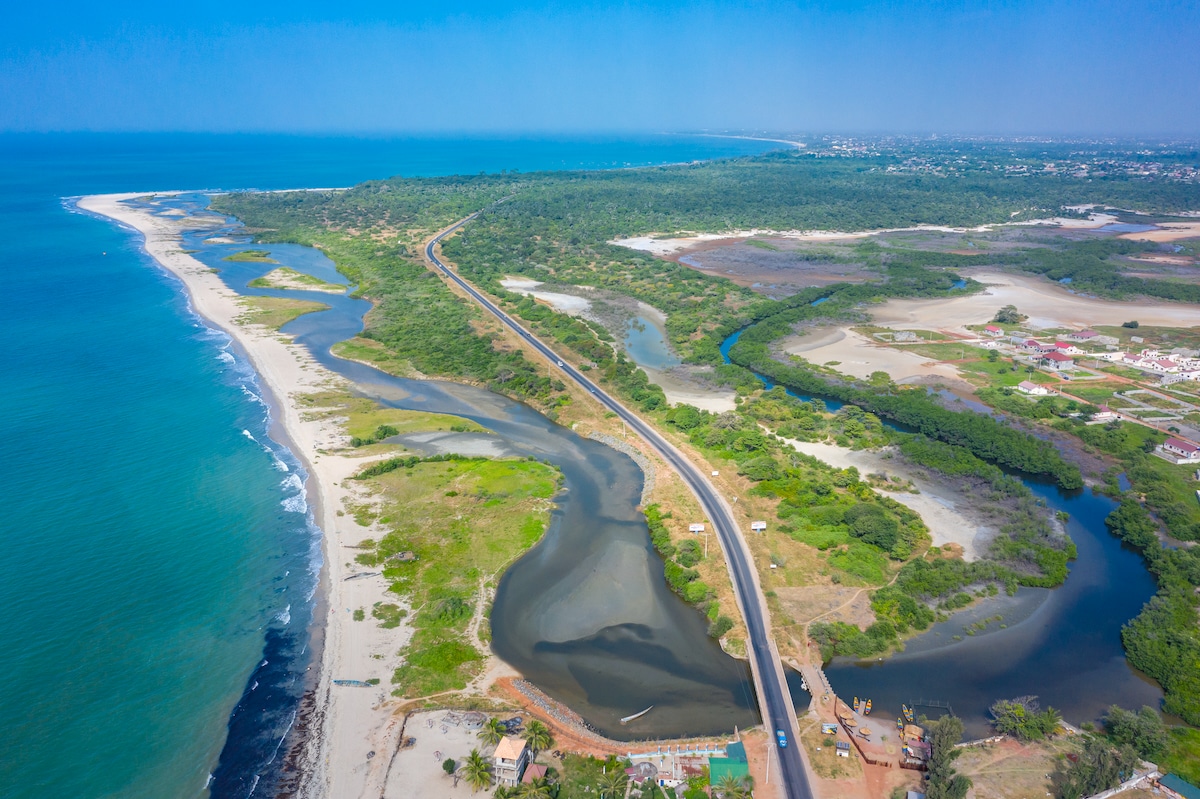Ecowatch
More Than $100 Billion in Debt-for-Nature Swaps Could Help Fight Climate Crisis, Report Says

A national reserve in The Gambia. The country is extremely vulnerable to sea level rise and should invest in wetland preservation and flood prevention, a new report says. mariusz_prusaczyk / iStock / Getty Images Plus

Why you can trust us
Founded in 2005 as an Ohio-based environmental newspaper, EcoWatch is a digital platform dedicated to publishing quality, science-based content on environmental issues, causes, and solutions.
According to a new analysis by the International Institute for Environment and Development (IIED), more than $100 billion of developing countries’ debt could be made available to spend on nature restoration, protecting ecosystems like rainforests and coral reefs and climate change adaptation.
The research is part of IIED’s “hidden handbrakes” campaign, designed to reveal and explain unseen obstacles to climate action.
“Many of the countries most threatened by rising temperatures have huge debt burdens, and are forever paying interest to wealthier nations that have contributed much more to the climate crisis,” said Laura Kelly, IIED’s director of research group Shaping Sustainable Markets, in a press release from IIED.
Kelly explained that enormous amounts of money are going to fund big polluters in a way that is fundamentally unfair.
“Money that could help restore damaged ecosystems and protect vulnerable communities from floods or drought is instead flowing to banks and polluters in the rich world,” Kelly said. “The IMF and World Bank should recognise that the current way of lending just doesn’t work for people or the planet. Our broken financial system must move on from colonialist, 20th-century thinking if it’s going to serve everyone fairly.”
IIED, a nonprofit based in the United Kingdom, looked at the likelihood of debt-for-nature exchanges in some of the 49 developing countries most vulnerable to defaulting on external debts, according to available data.
Estimates from the World Bank and International Monetary Fund (IMF) were used as the basis for the analysis, reported Reuters. The figures showed that the countries owed a total of $431 billion to the IMF, wealthier nations and hedge and pension funds.
Countries that could benefit from the debt-for-nature exchanges included Sri Lanka, Pakistan and The Gambia, which Kelly said was at “huge risk” of rising sea levels and needed to invest in wetland preservation and flood prevention.
When an agreement is reached between a nation and its creditors, part of the debt owed can be forgiven in exchange for reaching “specific, measurable and traceable” results in nature or climate projects, IIED said.
IIED calculated that approximately $103.4 billion could be made available for debt-for-nature swaps. These types of exchanges have already been used in Gabon, Ecuador, Belize and Cabo Verde.
“The debt, biodiversity and climate crises are closely linked in the world’s poorest countries, which also tend to be the most vulnerable to climate disasters and to have emitted relatively little greenhouse gas,” IIED said. “Most so-called climate finance is provided as loans, rather than grants, which means low-income nations are pushed further into debt even as they try to battle climate change – a hidden brake on progress. Research has found poorer countries spend far more servicing their debts than they receive in funds to fight climate change.”
IIED believes more of the exchanges should be used to relieve debt burdens of developing countries, along with other tools. It added that, for some countries, outright debt cancellation may be the best choice.
“They should be considered as part of layered solutions on a per-country basis, alongside agreements that pause debt repayments when disasters strike, or ‘parametric’ insurance that can cover payments while recovery takes place,” the press release said.
Of the nations looked at in the report, 29 are members of the Least Developed Countries Group, which are represented in United Nations climate negotiations as a bloc. The report concluded that the debt-for-nature swaps could make as much as $33.7 billion available for these nations — much more than the $6.1 billion given to them in 2021 for climate finance.
According to figures from the Organisation for Economic Co-operation and Development, the 49 countries in the IIED analysis received a total of $13.8 billion in 2021 for climate finance, which IIED pointed out was “significantly less” than what was needed.
“The amount of money that could be freed up through swaps also vastly outweighs the roughly $700 million pledged to the COP28 ‘loss and damage’ fund so far,” IIED said.
Subscribe to get exclusive updates in our daily newsletter!
By signing up, you agree to the Terms of Use and Privacy Policy & to receive electronic communications from EcoWatch Media Group, which may include marketing promotions, advertisements and sponsored content.
Source
Disclaimer: No copyright infringement intended. All rights and credits reserved to respective owner(s).












